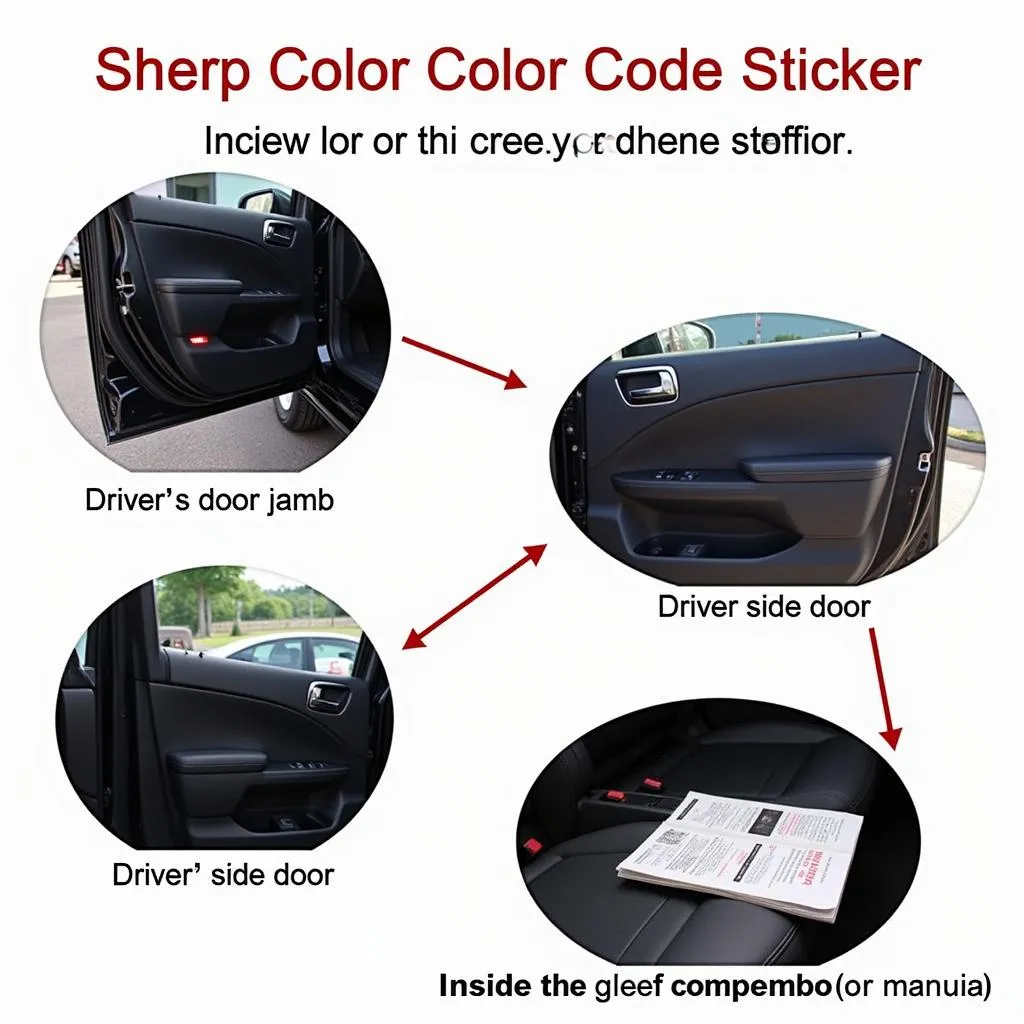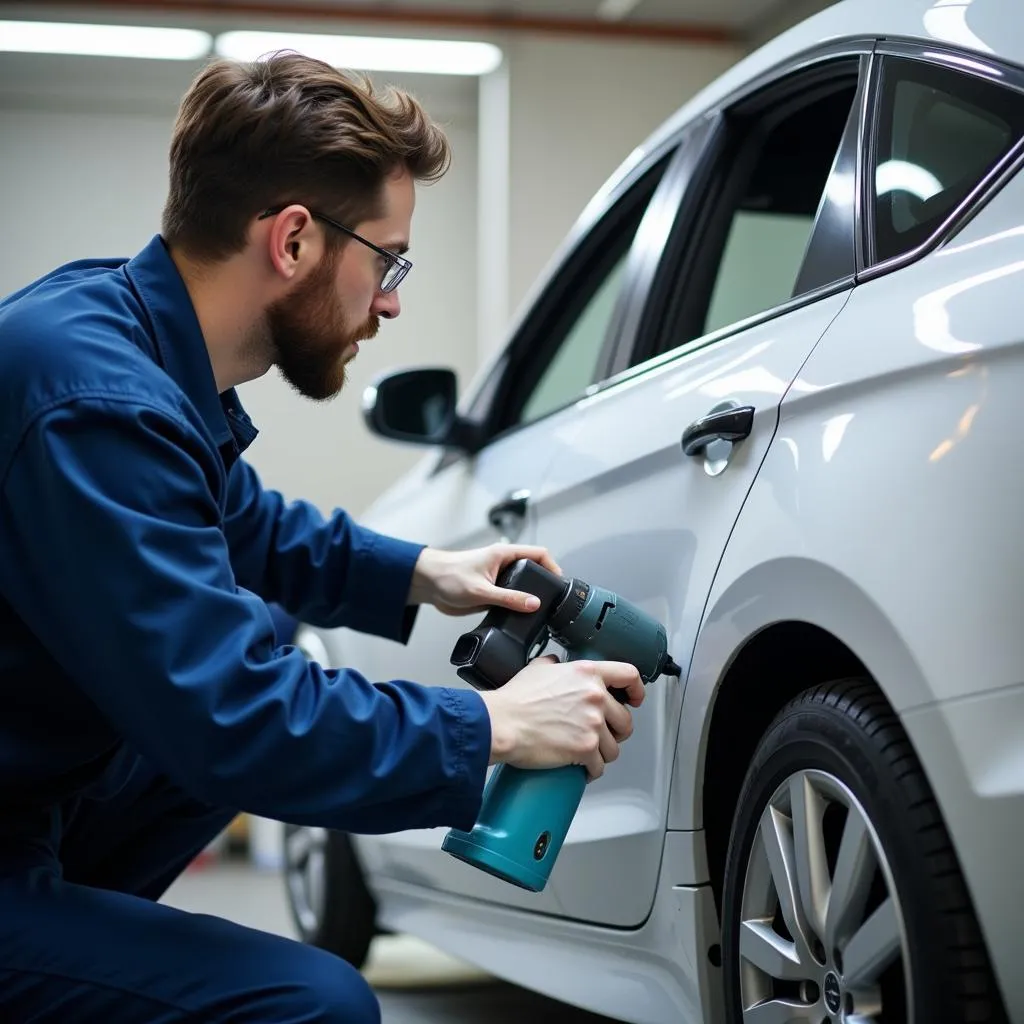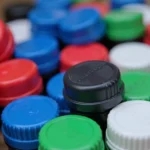Determining your car’s color might seem straightforward, but it’s not always as simple as glancing at it. Various factors can create subtle nuances in the shade, making it tricky to pinpoint the exact name of the color. Whether you’ve encountered a fender bender and need to provide the correct color code for repairs, or you’re simply curious about the official name of that stunning hue, this comprehensive guide will equip you with all the knowledge you need.
Where Can I Find My Car’s Color Code?
Locating the color code is the first step in your quest to unveil your car’s true colors. This code, a unique combination of letters and numbers, acts as the secret password to recreating that specific shade. Luckily, automakers typically hide this treasure map in a few key locations:
1. The Vehicle Identification Number (VIN) Sticker
The VIN sticker, often found on the driver’s side door jamb, is a treasure trove of information, including the color code. This sticker, like a car’s birth certificate, reveals essential details about your vehicle.
2. The Driver’s Side Door
Some manufacturers prefer to keep things simple and place the color code sticker directly on the driver’s side door, usually near the latch or hinges. This placement ensures easy access for anyone needing to find this vital information.
3. The Owner’s Manual
The owner’s manual, beyond offering driving tips and maintenance schedules, often reveals the color code. This handy booklet, a car owner’s best friend, can save the day when searching for essential car details.
 Finding Your Car's Color Code
Finding Your Car's Color Code
Decoding the Color Code: What Does it Mean?
Once you’ve successfully located the color code, the next step is deciphering its meaning. These codes, while seemingly cryptic, follow a specific format that varies slightly between manufacturers.
For instance, a code like “NH-782P” might indicate the color “Crystal Black Pearl” for a Honda, while a code like “WA926L” could represent “Summit White” for a Toyota. Don’t worry, though; you don’t need to be a codebreaker to crack this puzzle!
Online Resources and Databases: Your Color-Matching Allies
The digital age has revolutionized how we find information, and discovering your car’s color is no exception. Several online platforms specialize in deciphering color codes and revealing the mysteries they hold.
Websites like AutoColorLibrary.com or PaintScratch.com offer extensive databases, allowing you to input your car’s make, model, and year to uncover the official name and even purchase touch-up paint. These online tools are invaluable for anyone seeking a hassle-free color-matching experience.
Consulting a Dealership or Auto Body Shop: Expert Assistance at Your Fingertips
If navigating the digital world feels overwhelming, don’t hesitate to seek assistance from the experts. Your local dealership or a trusted auto body shop can quickly identify your car’s color code and provide you with the necessary information.
These professionals, equipped with years of experience, can guide you through the process and answer any questions you might have. They can also offer advice on paint matching and repairs, ensuring a flawless finish for your vehicle.
 Professional Color Matching at an Auto Body Shop
Professional Color Matching at an Auto Body Shop
Beyond the Code: Factors Affecting Color Perception
While the color code provides a standardized identification system, color perception can be subjective. Various factors influence how we see and interpret colors, making it essential to consider these elements for accurate color matching.
1. Lighting Conditions: The Chameleon Effect
Natural sunlight, fluorescent lights, and incandescent bulbs can all drastically alter the appearance of a color. A car that appears vibrant blue under the midday sun might look almost black under dim streetlights.
2. Paint Condition and Age: The Test of Time
Over time, exposure to the elements, UV rays, and everyday wear and tear can cause car paint to fade or oxidize, altering its original hue. A once-glossy red might become duller and lose its vibrancy as it ages.
 Effects of Sun Damage on Car Paint
Effects of Sun Damage on Car Paint
Conclusion
Discovering your car’s color is more than a simple curiosity; it’s crucial for accurate repairs, touch-ups, and maintaining your vehicle’s aesthetic appeal.
By understanding where to find the color code, how to interpret it, and the factors influencing color perception, you can confidently navigate the world of automotive hues. Remember, whether you’re dealing with a minor scratch or embarking on a complete color change, having the right information ensures a perfect match and a vibrant finish for your prized possession.
If you’re looking for expert assistance in Hà Nội, contact Color Box Hà Nội at 0373298888 or email us at [email protected]. Our team of color specialists is ready to guide you through every step, from identifying your car’s color to providing high-quality paint solutions. Visit our showroom at 86 Cầu Giấy, Hà Nội, and let us help you unlock the full potential of color for your vehicle.

